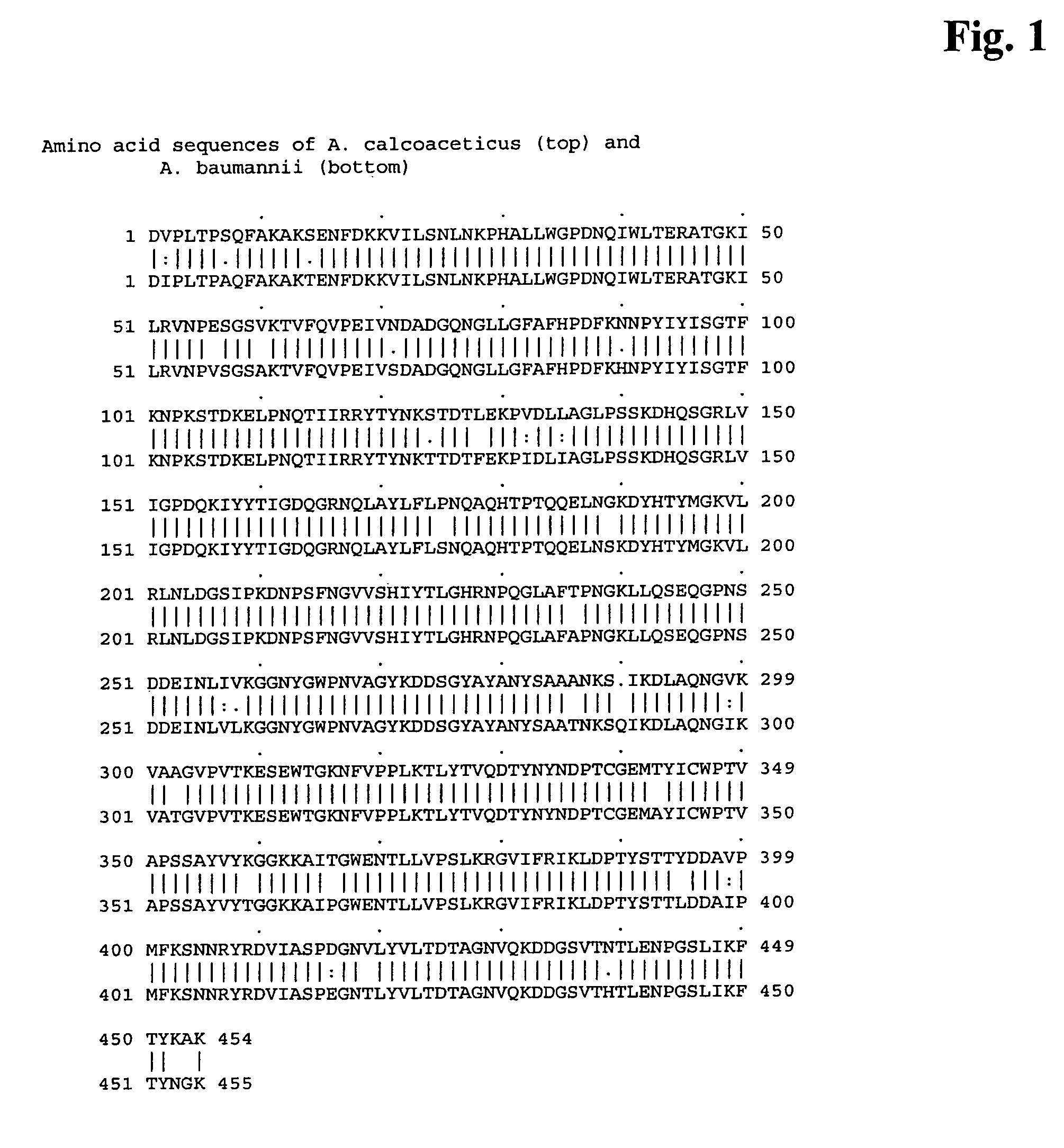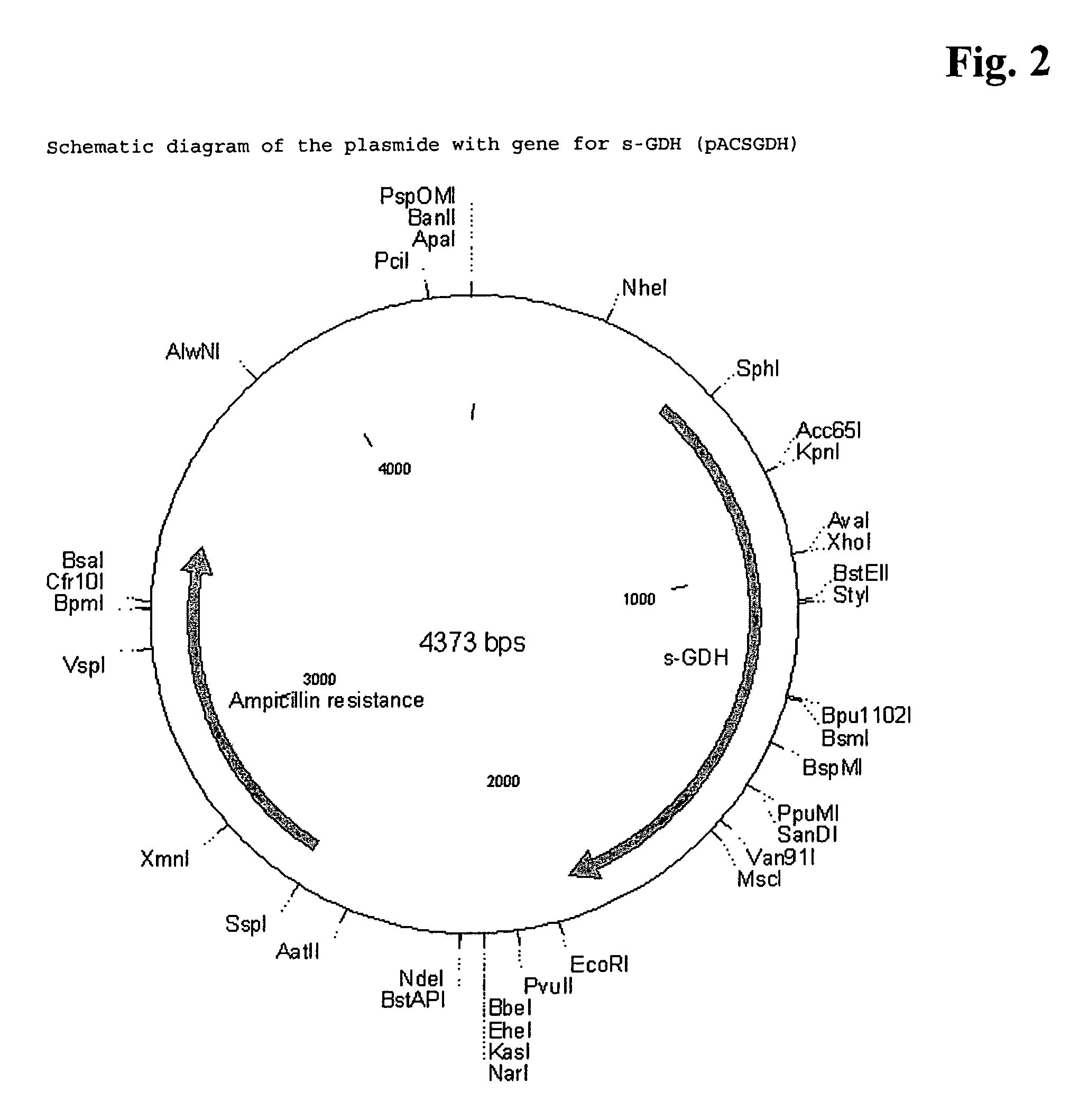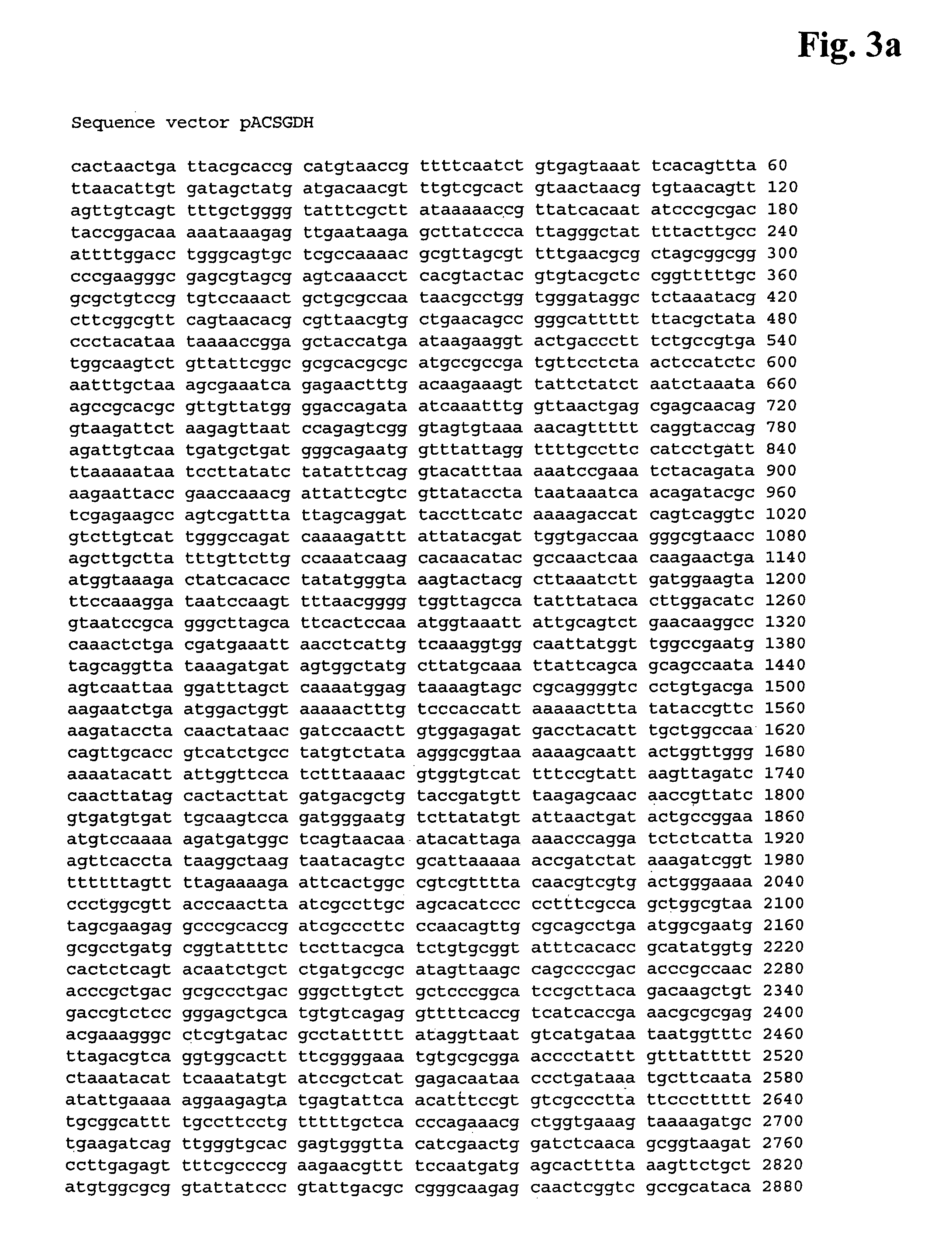Genetically engineered pyrroloquinoline quinone dependent glucose dehydrogenase comprising an amino acid insertion
a technology of glucose dehydrogenase and pyrroloquinoline quinone, which is applied in the field of glucose concentration determination, can solve the problems of not efficiently giving electrons directly to oxygen, poor electron acceptor of oxygen s-gdh, and difficulty in determining glucose, so as to improve the specificity of glucose and improve the properties
- Summary
- Abstract
- Description
- Claims
- Application Information
AI Technical Summary
Benefits of technology
Problems solved by technology
Method used
Image
Examples
example 1
Cloning and Expression of the Wild-type A. alcoaceticus Soluble PQQ Dependent Glucose Dehydrogenase in E. coli
[0106]The s-GDH gene was isolated from Acinetobacter calcoaceticus strain LMD 79.41 according to standard procedures. The wild-type s-GDH gene was subcloned into a plasmid containing the mgl promoter for adjustable expression (cf. Patent application WO 88 / 09373). The new construct was called pACSGDH (see FIGS. 2 and 3). The recombinant plasmids were introduced into a host organism selected from the E. coli group. These organisms were then cultivated under appropriate conditions and colonies showing s-GDH activity selected.
[0107]The plasmid pACSGDH was isolated from a 200 ml over-night culture of the done mentioned above using the QIAGEN Plasmid Maxi Kit (Qiagen) according to the manufacturers' protocol. The plasmid was resuspended in 1 ml bidest water. The concentration of the plasmid was determined using a Beckman DU 7400 Photometer.
[0108]The yield was 600 μg. Then the qua...
example 2
Generating Mutant T348G
[0109]As an important starting template for the generation of insertion variants a mutant s-GDH with the mutation T348G was manufactured. This mutant of s-GDH was chosen because it is known to have reduced activity to maltose compared to glucose (see WO 02 / 34919).
[0110]The QuickChange Site-Directed Mutagenesis Kit (Stratagene, Cat. 200518) was used to substitude the threonine at position 348 by a glycine. The appropoiate primers were designed.
[0111]The 5′- and the 3′-primer used for mutagenesis were complementary to each other and contained the modified codon for the exchange from threonine to glycine (ACA to GGG) in a central position. These nucleotides were flanked by 12 to 16 nucleotides at each end. The sequences of the nucleotides were identical to the sense and anti-sense DNA-strand flanking the codon for the amino acid exchange. Instead of the codon ACA=threonine for the sense and TGT for the anti-sense strand, the primers contained GGG=glycine for the ...
example 3
Screening
[0113]The mutant colonies on the agar plates described above where picked into microtiter plates (MTPs) containing 200 μl LB-Ampicillin-media / well and incubated over night at 37° C. These plates are called master plates.
[0114]From each master plate, 5 μl sample / well was transferred to an MTP containing 5 μl per / well of B (B=Bacterial Protein Extraction Reagent; Pierce No. 78248) for cell disruption and 240 μl of 0.0556 mM pyrollo-quinoline quinone (PQQ); 50 mM Hepes; 15 mM CaCl2pH 7.0 / well for activation of s-GDH were added. To complete the formation of the holoenzyme, the MTP was incubated at 25° C. for 2 hours and at 10° C. over night. This plate is called working plate.
[0115]From the working plate 3×10 μl sample / hole were transferred to three empty MTPs. After that, one was tested with glucose at standard concentration, the second one with a reduced glucose concentration (1.9 mM instead of 30 mM) and the third with maltose or another selected sugar molecule as a substrat...
PUM
| Property | Measurement | Unit |
|---|---|---|
| pH | aaaaa | aaaaa |
| concentrations | aaaaa | aaaaa |
| concentration | aaaaa | aaaaa |
Abstract
Description
Claims
Application Information
 Login to View More
Login to View More - R&D
- Intellectual Property
- Life Sciences
- Materials
- Tech Scout
- Unparalleled Data Quality
- Higher Quality Content
- 60% Fewer Hallucinations
Browse by: Latest US Patents, China's latest patents, Technical Efficacy Thesaurus, Application Domain, Technology Topic, Popular Technical Reports.
© 2025 PatSnap. All rights reserved.Legal|Privacy policy|Modern Slavery Act Transparency Statement|Sitemap|About US| Contact US: help@patsnap.com



